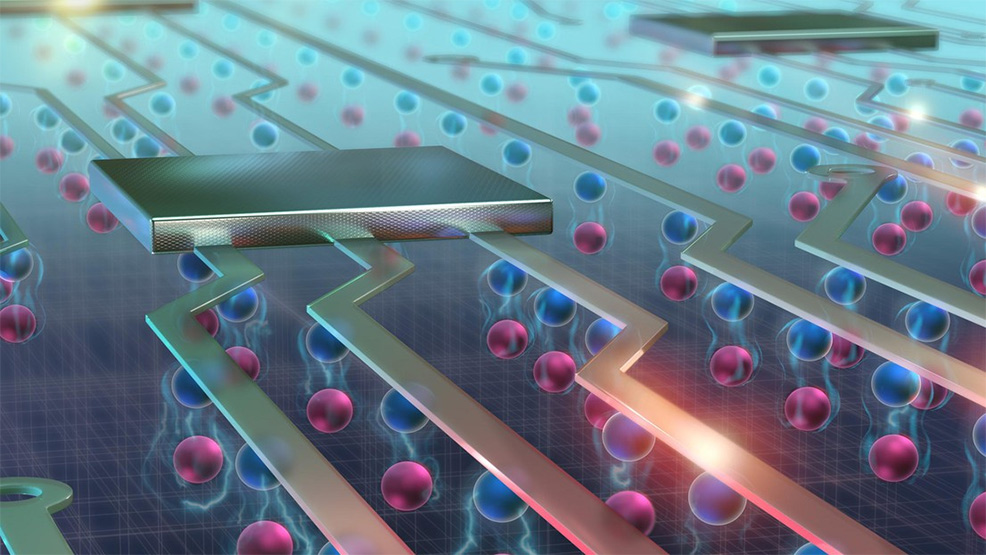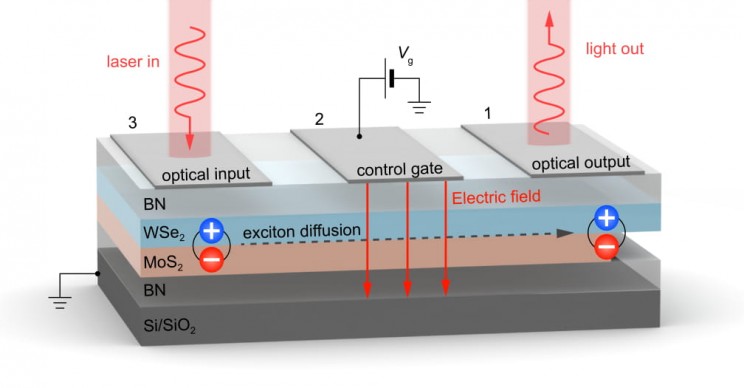
8th January 2019 Excitons could lead to more efficient electronics Researchers at Ecole polytechnique fédérale de Lausanne (EPFL) report a way to control properties of excitons and change the polarisation of light they generate, which could lead to transistors that undergo less energy loss and heat dissipation.
Excitons are subatomic "quasiparticles", meaning they are not actual particles, but rather an interaction between two particles. Excitons are created when an electron absorbs light and moves into a higher energy level, or "energy band". Having absorbed light, this excited electron leaves behind an "electron hole" in its previous energy band. Electron holes are spaces in an atom, where there is no electron, but where one could exist. Because the electron has a negative charge and the hole a positive charge, the two are bound together by an electrostatic force called a Coulomb force. This electron-hole pair is referred to as an exciton. Excitons exist only in semiconducting and insulating materials. Their extraordinary properties can be easily accessed in so-called 2D materials, which are materials whose basic structure is just a few atoms thick. The most common examples of such materials are carbon and molybdenite. When such 2D materials are combined, they can exhibit quantum properties that neither possesses on its own. In a study published by Nature Photonics, scientists from EPDL combined tungsten diselenide (WSe2) with molybdenum diselenide (MoSe2). The team discovered new properties with an array of possible high-tech applications. By using a laser to generate light beams with circular polarisation, and slightly shifting the positions of the two 2D materials so as to create a moiré pattern, they were able to use excitons to change and regulate the polarisation, wavelength and intensity of light.
The scientists manipulated the excitons' "valley," which determines the extremes of energies of the electron and the hole. These valleys – which are where the term "valleytronics" comes from – can be leveraged to code and process information at the nanoscale. "Linking several devices that incorporate this technology would give us a new way to process data," says Andras Kis, Associate Professor in the Laboratory of Nanoscale Electronics and Structures. "By changing the polarisation of light in a given device, we can then select a specific valley in a second device that's connected to it. That's similar to switching from 0 to 1 or 1 to 0, which is the fundamental binary logic used in computing." This technology might be in its early stage, but could lead to a new generation of transistors that undergo less energy loss and heat dissipation, helping to maintain the progress in computer power.
Comments »
If you enjoyed this article, please consider sharing it:
|








